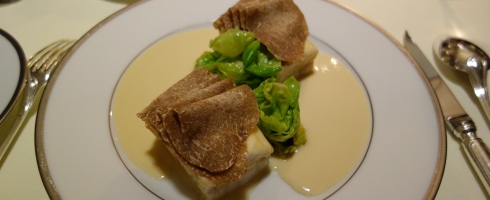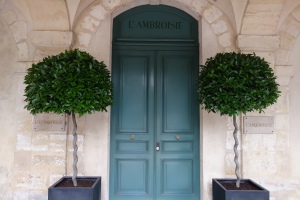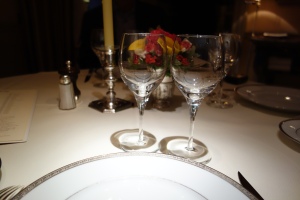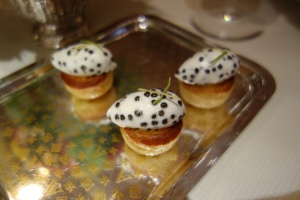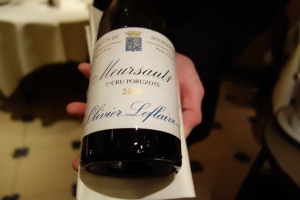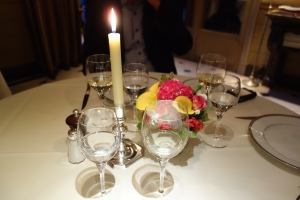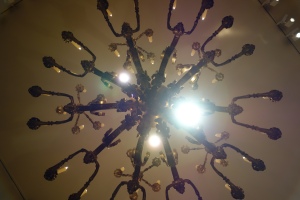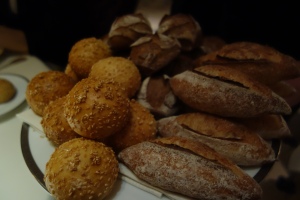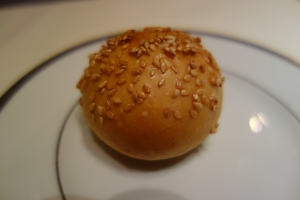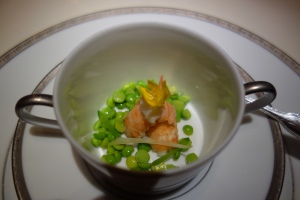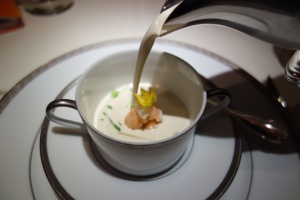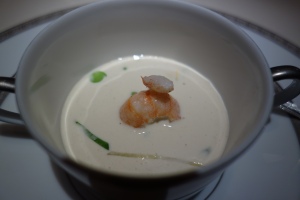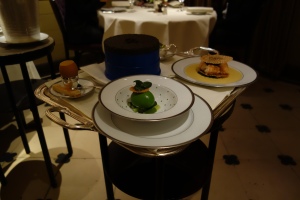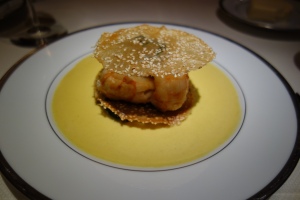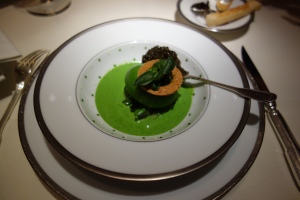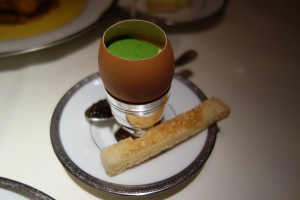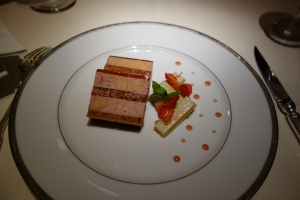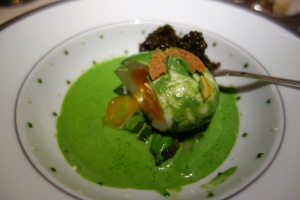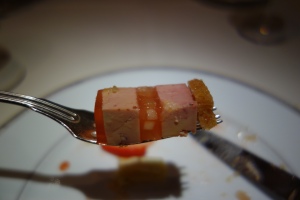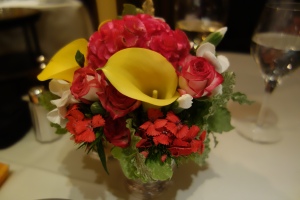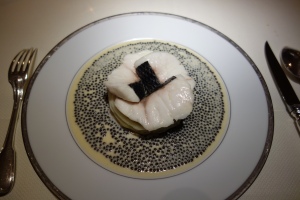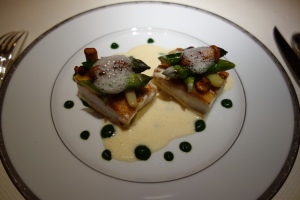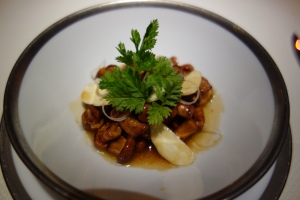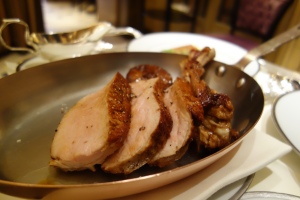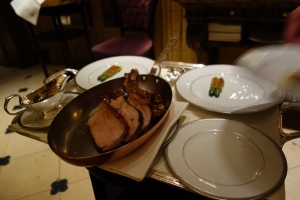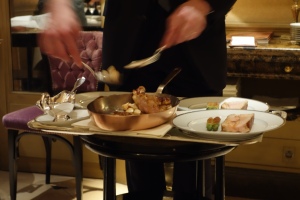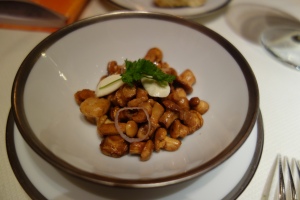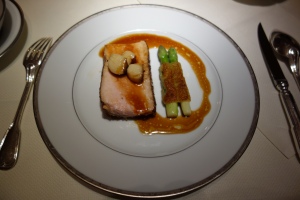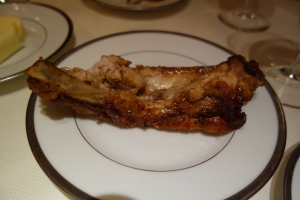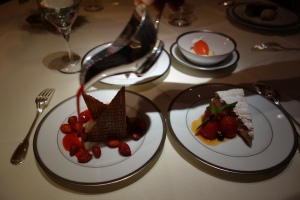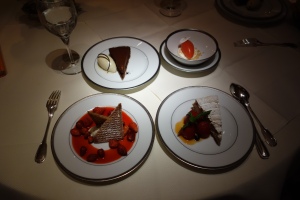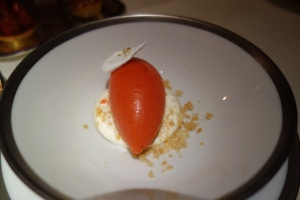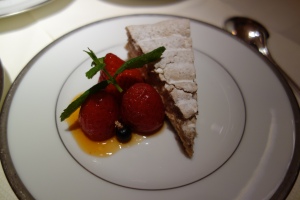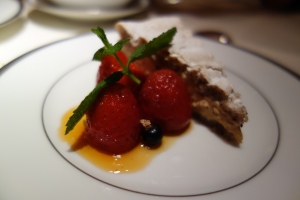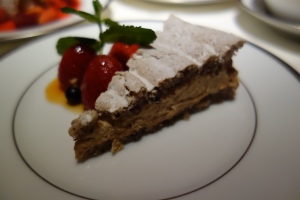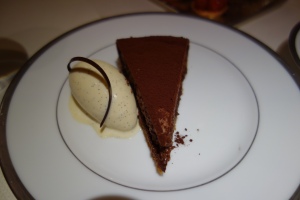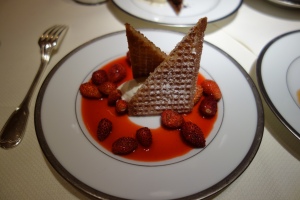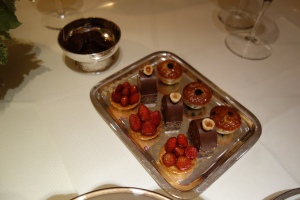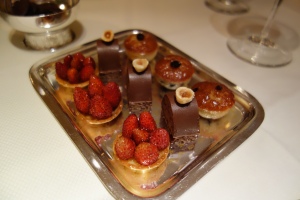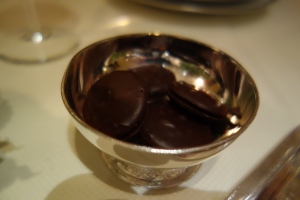- yam’Tcha in Paris (1*)
- Le Cinq in Paris (3*)
- Clown Bar in Paris
- Ron Gastrobar in Amsterdam (1*)
- BAK in Amsterdam
- Bord’Eau in Amsterdam (2*)
- de Librije in Zwolle (3*)
- Quatre Mains in Bruges
- Zetjoe in Bruges [the new face of recently closed De Karmeliet (3*)]
- L’Ambroisie in Paris (3*)
- Histoires in Paris (2*)
- de Librije
- L’Ambroisie
- Zetjoe
- Bord’Eau
- yam’Tcha
- Histoires

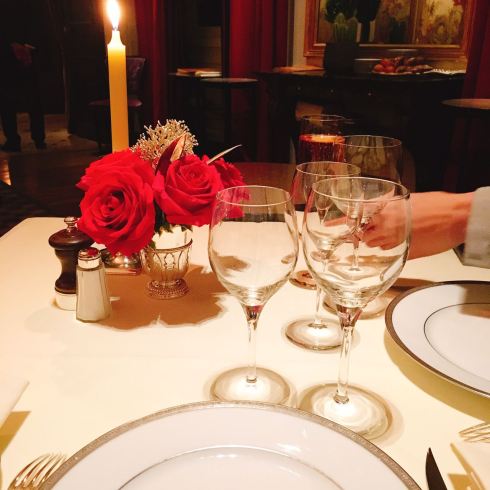


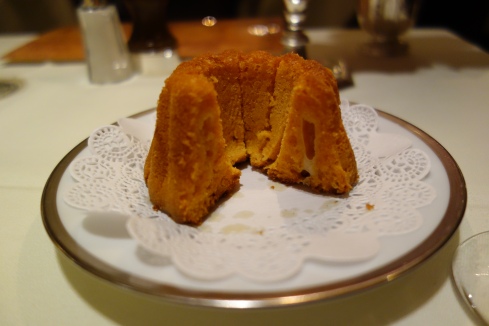
- Crunchy cheese kugelhopf – really good, I think this was made of Parmesan. A warm bite with a soft centre. (5/5)

- Beetroot soup, cream of mustard seeds, foie flan underneath – alright. A bit unrefined in the beetroot soup texture, which was quite grainy and not too harmonious with the foie (4/5)
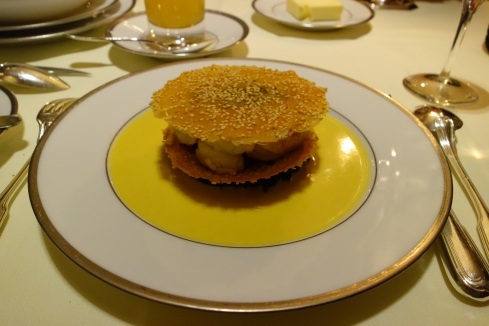
- Feuillantine de langoustines aux graines de sésame, sauce au curry (4.75/5)
- As above: The clearest signs of Chef Pacaud’s discerning palate and keen intellect was reflected in a pair of dishes. There is a distinct taste to cooked watercress, which produces a puckering effect in the mouth without being bitter. The taste impression it leaves on the palate is a light puckered savoriness. This is readily apparent to anyone who has had Chinese watercress soup with goji berry and pork broth. Chef Pacaud uses this as the backbone for his signature dish, langoustine with sesame wafer and curry sauce. It would be quite rich, this tangy curry creation, if it were not cut by the hidden mound of cooked watercress at the very bottom, which produces this light puckered savoriness. I tried my companion’s dish of scallops, caviar, and potato, with a raw vegetal sauce. It turned out the raw vegetal sauce was made of watercress as well – with a real vegetal scent that gave enough tension and surprising synergy to the scallop dish that made it sublime. (It is I think, lazy thinking, that lumps all luxury ingredients together, like uni, caviar, scallops, and expects the end result to be more than the sum of the parts, or even the sum of the parts. A great luxury dish requires a unifying element, often a humble ingredient, to truly pull it together).


- Melba de noix de Saint-Jacques au caviar golden, coulis de cresson
- I didn’t have a full portion, but from what I tasted, the scallops were real toothy and had serious texture, with a perfectly textured potato cream and watercress sauce. The caviar added the proper salty element. A perfect dish I think



- Dos de sole braise au vin jaune, effeuilee de choux de Bruxelles et truffe blanche (5/5)
- As above: The most memorable dish of my dinner this time was Dover sole, with vin jaune sauce, Brussel sprouts and the last of season white truffle. The Dover sole cut like butter, but in truth, the fatty fish was a side show to the axis of a tangy vin jaune, the earthy smell of Alba truffles, and the refreshing bitterness of Brussel sprouts
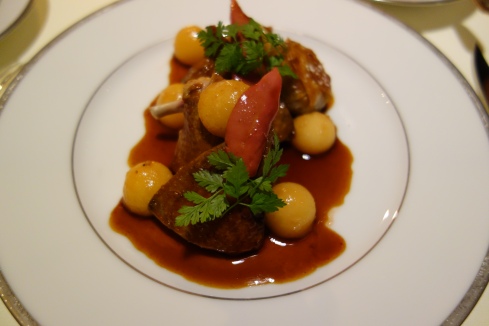


- Salmis de supremes de pigeon aux coings, cuisses en pastilla
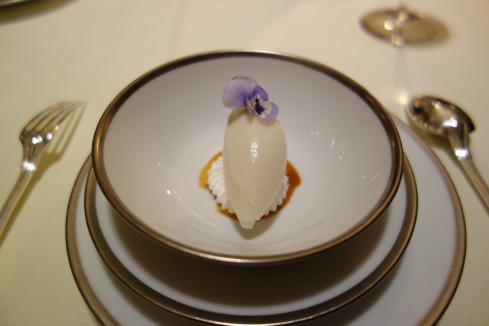
- Pear sorbet with caramel of pear

- Boule nacree aux fruits exotiques emulsion neigeuse au Passoa (5/5)
- A really excellent dish, a refreshing sugar sphere with coconut whipped cream, and peach. Passionfruit was only outside. It helped refresh our palates
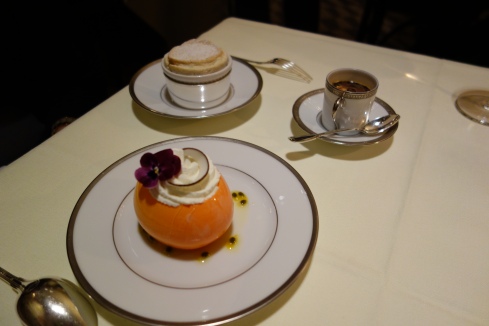


- Souffle chaud a la nougatine de noix, cafe liegeois


- Brioche fine en pain perdu, reine des reinettes caramelisee
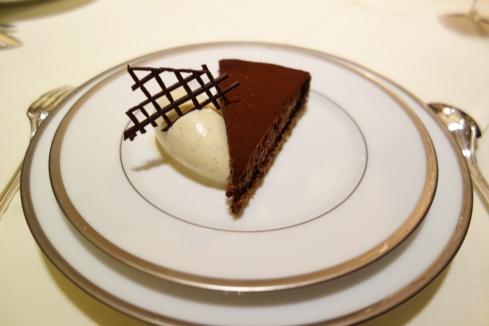
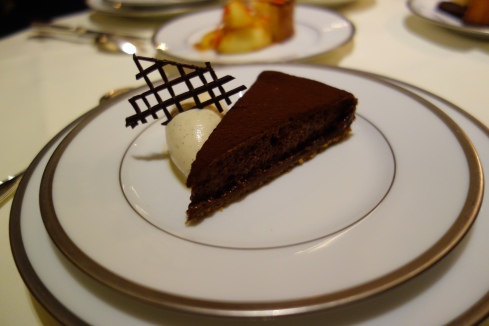
- Tarte sablee au cacao amer, galce a la vanille Bourbon (5/5)
- No words – best no-flour chocolate tart anywhere, which a crunchy base
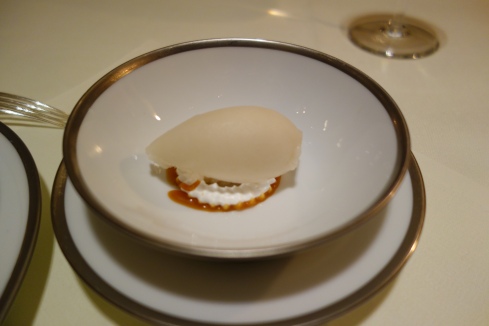
- Alcoholic reprise of pear sorbet with caramel
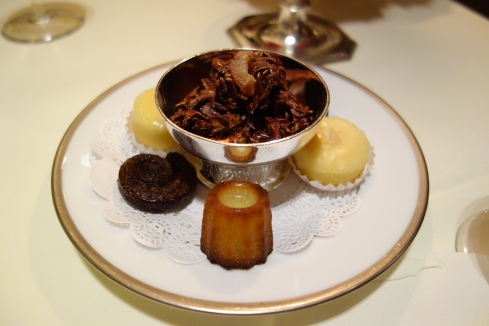



- Mocktail: Cucumber, rosewater, juniper, tonic water

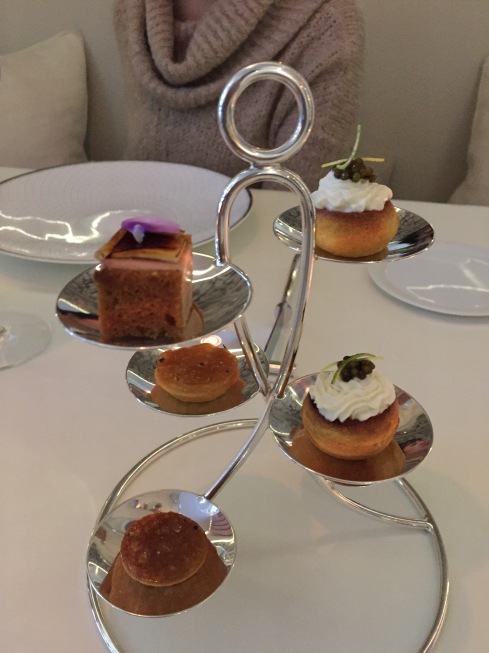

Amuse bouche 1:
- Brioche mousseline et creme d’oignons
- Cornet croustillant a la creme de saumon
- Langoustines au Caviar Golden
- Marbre de foie gras de canard (5/5)
- Of these, I found the foie sandwich amazing, having solid consistency and saltiness. A decadent bite.

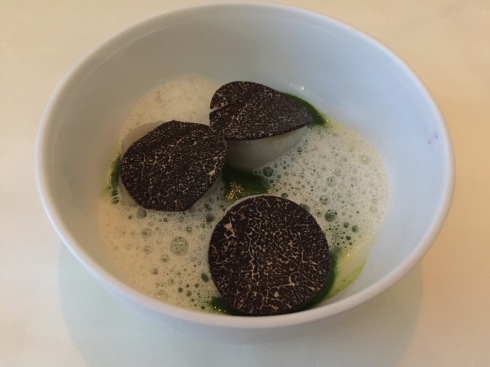
Amuse bouche 2: Scallop, black truffle, watercress sauce, toasted bread emulsion
- The black truffle, served on warm scallops didn’t release its flavor fully due to the temperature. The ingredients were individually good but as a dish failed to come together. (3.25/5)
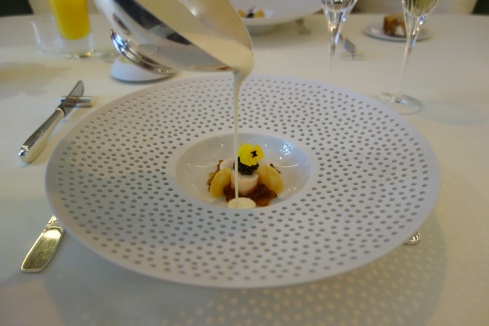
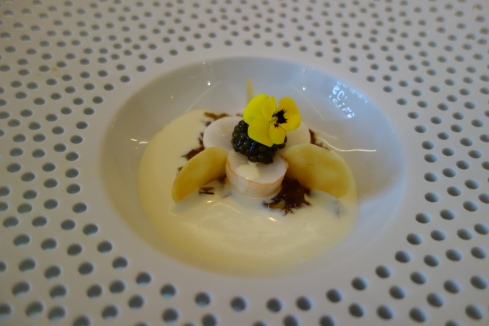
Royales Scampi: Anise Cream and caviar Golden
- 4/5, but maybe 4.5/5 if you like anise flavors. The scampi had a slight bitter, iodine taste, which paired well with the seawater jelly. Tropezienne sauce, based off of a Provence pastry, was anise flavored. The dominant flavor palette of the dish was sweet. I generally did not like iodine taste of the scampi or the anise flavors of the Tropezienne sauce, but cannot deny someone with a sweet tooth might like it better



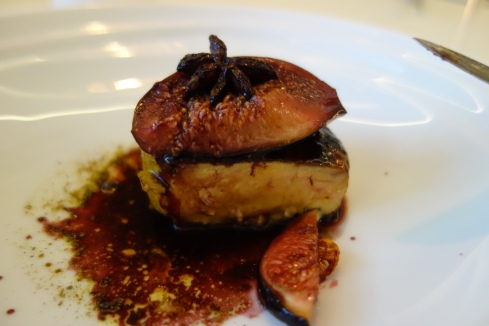
Foie Gras: Red wine decoction with star anise
- 4/5. A huge hockey puck of foie gras with a fig and star-anise red wine. That is all. Not sure what the chef was thinking here.



Sole: Root vegetables and caviar Golden
- This was the sole dish which had an idea that improved over a L’Ambroisie version – the vin jaune was paired with a vin jaune sabayon which was much boozier and sweeter, allowing for a more complex sauce. However the balance of the dish was not as good. The buttery dover sole I had at L’Ambroisie was a conveyance for the axis of Brussel sprouts – vin jaune – white truffle. Arguably the Brussel sprouts harmonized that dish. Here the root vegetables were not discernable, and the dominant notes were Dover sole and vin jaune – a less balanced and much richer combination – which over-satiated me. Overall rating: not perfect, but interesting. 4.75/5
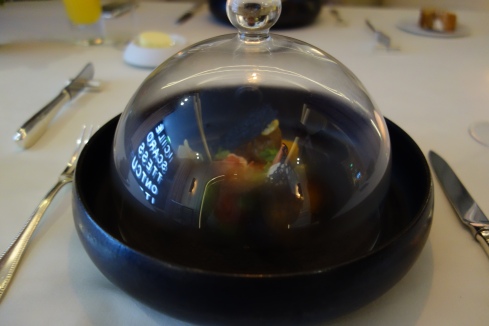
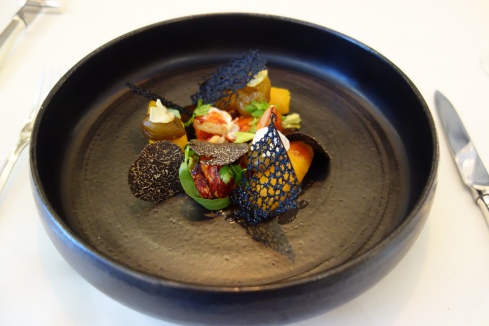

Blue Lobster: Pumpkin and chestnut, “sauce diable”
- The firmness of the blue lobster was great. But what was the point of composing a dish of it with meaty hunks of carrot and chestnut, with little sauce to tie it together. A failure of composition. 2.5/5

Trou Normand: Lemon, vodka tonic
- We were getting stuffed at this point!


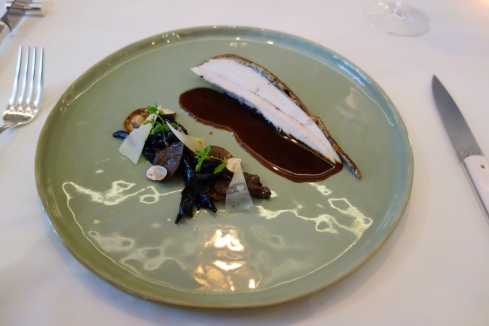

Chicken from Bresse: Stuffed with black truffle, wild mushrooms
- Slightly tough. The best part was the roast skin, lightly perfumed with the black truffle mash underneath the skin. Unfortunately the Bresse chicken showed none of its superior characteristics, and the breast was indistinguishable from a supermarket rotisserie chicken – tough, dry, mostly tasteless with the slight sour-neutral taste of pure white protein. In fact the skin did not show off much crispness except in parts. Compared to a roast Belgian Malines chicken served with sherry sauce we had two nights before at Zetjoe in Bruges, this was not in the same galaxy. A mediocre preparation of chicken. (2.5/5) However, the wild mushroom with slices of cheese was good.

Cheese (hard cheeses)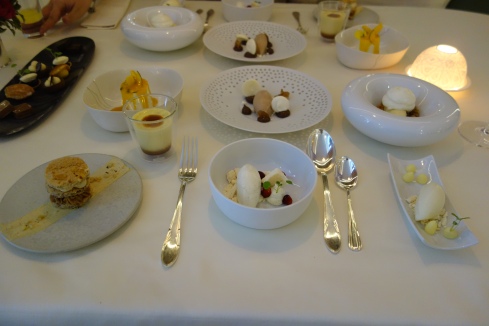

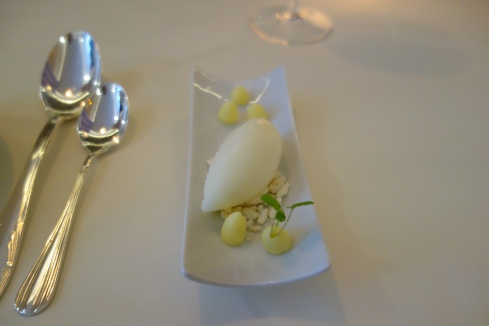


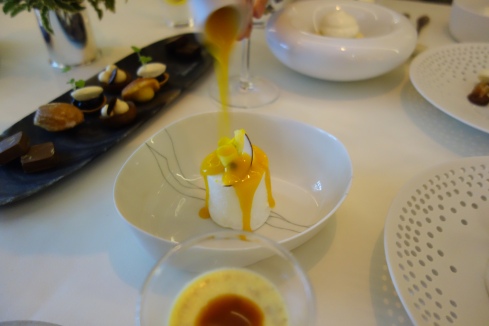
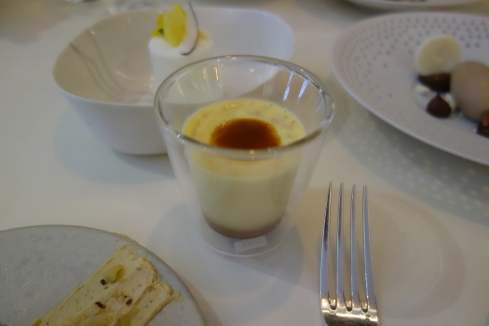
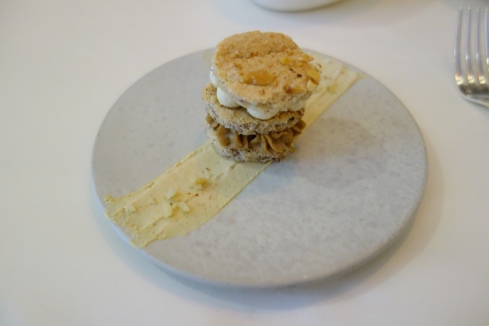
- Dessert: Big waltz in seven compositions
- Wild strawberry, yoghurt sorbet
- Lemon sorbet
- Williams pear, Madagascar vanilla
- Cacao Mont Blanc
- Blancmange with passionfruit and mango
- Salted caramel with coffee cream
- Hazelnut praline and nuts
- There were many similar themes with our dessert assortment the night before, – where L’Ambroisie had a sugar ball with passionfruit and mango, here it was a springy blancmange. A hazelnut praline with nuts reminded me of a nougatine souffle the night before; the coffee caramel cream jelly in the clear cup reminded me of the caffe Liegeois the night before. However, at this point we were getting full, and felt that there was no real perfect dessert that anchored this assortment. Instead, it just seemed a profusion of passable desserts, like a chef regurgitating his culinary curriculum on the table by “Priori Incantatem”. What makes the L’Ambroisie assortment incomparably better in my view, is that all of them are fucking good, with the emphasis on “fucking good” rather than “dessert assortment”.

- Sweets

